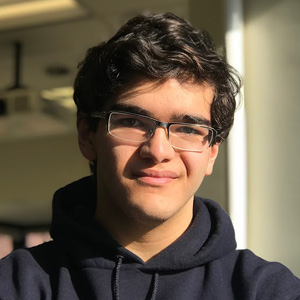Student Philanthropy for All


I’m a product of student philanthropy. Nine years ago, my elementary school class fundraised only using pennies — a Penny Harvest — then democratically decided where the money would go.
I echo the sentiments expressed by countless students who have participated in these kinds of programs. In retrospect, exposing students to the philanthropic processes of relationship-building, fundraising, and decision-making was inspiring and introduced me to the third sector early on. Despite the age and experience gaps, I felt the same engagement with the community that grantmakers have on a daily basis.
It’s been eight years since I helped give away an entire grant worth of pennies. Now, I am at a private university where buildings, institutes, and even scholarships (including the one that’s allowing me to afford college) are named for philanthropists. Eight years later, student philanthropy returned to my life with the Learning by Giving Foundation that gives $10,000 to classrooms that teach grantmaking across the country.
Both examples represent one of two forms of student philanthropy: direct and indirect giving, which is defined by the classroom’s role in the grantmaking process (Olberding, 2012). The former, which Penny Harvest and Learning by Giving implement, gives the money to the students for them to decide. In indirect giving, students work with philanthropic organizations on assessing grants to inform how the money is given — not full control, but a contribution nonetheless.
Student philanthropy upends perceptions of the philanthropist as a billionaire with a foundation based in a fully staffed Midtown office; these programs diversify the field by age alone. Given student philanthropy’s ability to increase representation and understanding of philanthropy, what if local organizations use this in their communities, large and small? I believe that not only is student philanthropy an innovative approach for education, reinforcing philanthropy’s literal meaning as a love for humanity, but it may be a tool for local foundations.
We must first point to current research showing the effectiveness of student philanthropy. A broad survey of current student philanthropy programs suggests that they succeed in their many goals, ranging from building relationships with nonprofits to sharpening critical thinking (Benz, 2020). A multitude of studies on Northern Kentucky University’s Mayerson Student Philanthropy Project (MSPP), an indirect giving program, suggested the following:
These benefits exist beyond MSPP. A Sillerman Center report on Campus Compact’s Pay It Forward courses — which use a combination of volunteering and direct giving — found that course engagement gave students the toolkit to understand and select nonprofits that they can both donate to and give their time (Benenson et al., 2014). Oakland University’s Student Philanthropy and Community Engagement Program helped students and the school itself build relationships with community members (Benz, 2020). Student philanthropy can be particularly powerful for specific majors. In the case of college students pursuing a bachelor’s degree in social work, further partnerships with foundations, such as through field placements, could be an innovative step in macro social work practice education (McClendon et al., 2016). Whether or not philanthropy is professionalized, students ought to learn about how the third sector works, from the foundation to the nonprofit.
Thinking outside university, K–12 philanthropy education programs in independent schools have effectively cultivated prosocial behaviors while remaining part of schools (Weber & Thayer, 2017). In Sacramento, the Grants Advisory Board for Youth philanthropy program established by the Sacramento Region Community Foundation created an all-around positive youth development experience in areas including leadership, communications, and conflict resolution.
As shown, the literature is immensely in favor of student philanthropy across grades. For foundations that would like to use this, direct and indirect funding models will be the keys to creating a program. Much of the current knowledge of student philanthropy has studied grade level and the form of giving, but not much on how different foundation types could take advantage of it. The question then becomes: how does the type of foundation inform student philanthropy? While few foundations use student philanthropy as a strategy, such as Learning by Giving, other types of foundations should consider using student philanthropy as a positive force that can operate on different education levels. I offer one suggestion for community foundations.
Perhaps community foundations could use indirect giving student philanthropy to address critical problems. Natalie Orfalea (2015) of the sunsetted Orfalea Foundation stressed that partnership is critical to a successful foundation. Community partners can identify ineffective systems that foundations alone couldn’t address. School partnerships could advance a variety of strategies while building awareness of relevant problems to the community. Take foundations where education is part of their strategy. To understand the particular needs of schools in a given location, there is no better source of data than the schools in question. Education is not the only strategy — foundations can recruit students involved in artistic and cultural nonprofits to gain new perspectives and assess the impact of nonprofits. Community foundations that engage in student philanthropy at all levels can not only better advance their own missions, but inspire students to pursue further philanthropic and/or civic work.
Kathryn A. Agard (2002), former executive director of the Johnson Center, noted that “One of the major purposes of universal public education in this country is preparation for democratic citizenship” (p. 41). What better way to understand pressing issues of our democracy than to use a tool that creatively invests in solutions?
Family foundations provide a model for this. A new innovation in family foundations is the next generation board, where the younger members of the family are introduced to the family’s philanthropic endeavors and prepared to lead later on in life. Strong engagement in these programs act as great indicators of how students build philanthropic behaviors (Laskowski et al., 2013). Here, we have programs for the next generation of philanthropic families. This can be scaled up to the community — identify and expose young, engaged citizens to pressing problems not simply through college scholarships, but through collaboration with the foundation. This provides data and a fresh perspective for the board while engaging students in philanthropy and civil society.
With student philanthropy programs flourishing in the past decade, we should ask further questions to strengthen these programs. For researchers who may find interest in this topic, it may be worth differentiating between experiential and student philanthropy, assuming that they are in fact interchangeable terms. What kinds of issue areas do student philanthropy most often or most effectively address, and how does this change with other constraints like geography and grant size? The many questions surrounding student philanthropy indicate the potential in the subject. Of course, this potential has to be tracked — past research agrees that there should be more tools for evaluation of student philanthropy programs (Weber & Thayer, 2017). There are also the aforementioned types of foundations and how they can most effectively benefit from student philanthropy programs — one community foundation’s approach to teaching the field won’t necessarily be compatible with that of a national foundation.
In sum, student philanthropy’s proven success can address urgent problems by creating democratic grantmaking opportunities while teaching the philanthropic and nonprofit sectors to students of all ages and backgrounds. I hope that student philanthropy can draw students into the field, as it did for me eight years ago.

Agard, K. A. (2002). Learning to give: Teaching philanthropy K–12. New Directions for Philanthropic Fundraising, (36), 37–54. https://onlinelibrary.wiley.com/doi/abs/10.1002/pf.3603
Benenson, J., Moldow, E., & Hahn, A. (2014). Engaging a new generation of philanthropists: Findings from the Pay It Forward Student Philanthropy Initiative. Sillerman Center for the Advancement of Philanthropy. https://ohiocampuscompact.org/wp-content/uploads/large/sites/41/2017/10/Engaging-a-New-Generation-of-Philanthropists-2014.pdf
Benz, T. A., Piskulich, J. P., Kim, S., Barry, M., & Havstad, J. C. (2020). Student philanthropy and community engagement: A program evaluation. Innovative Higher Education, 45(1), 17–33. https://doi.org/10.1007/s10755-019-09484-8
Bloch, J. (2018). Student philanthropy: Experiencing grant proposals from the funder’s perspective. Business and Professional Communication Quarterly, 81(2), 167–184. https://doi.org/10.1177/2329490617752576
Farrow, A. M. (2017). Grants advisory board for youth: A case study in youth philanthropy (Order No. 10635594). Available from ProQuest Dissertations & Theses Global. (2026286150).
Larson, K. C., Downing, M. S., Nolan, J., & Neikirk, M. (2020, August 25). High impact practices through experiential student philanthropy: A case study of the Mayerson Student Philanthropy Project and Academic Success at Northern Kentucky University. Journal of College Student Retention: Research, Theory & Practice. https://doi.org/10.1177/1521025120952083
Laskowski, K., Hernandez, A., & Reker, K. M. (2013, June). Igniting the spark: Creating effective next generation boards. National Center for Family Philanthropy. https://www.philanthropyohio.org/sites/default/files/resources/june-2013-passages-next-gen-boards-final-web.pdf
Li, H., Xu, C., & McDougle, L. M. (2019, Spring). Philanthropy can be learned: A qualitative study of student experiences in experiential philanthropy courses. Philanthropy & Education, 2(2), 29-52. https://www.jstor.org/stable/10.2979/phileduc.2.2.02?seq=1
McClendon, J., Kagotho, N., & Lane, S. R. (2016). Preparing social work students for leadership in human service organizations through student philanthropy. Human Service Organizations: Management, Leadership & Governance, 40(5), 500–507. https://doi.org/10.1080/23303131.2016.1173159
McDougle, L., McDonald, D., Li, H., McIntye Miller, W., & Xu, C. (2017, April). Can philanthropy be taught? Nonprofit and Voluntary Studies Quarterly, 46(2), 330-351. https://doi.org/10.1177/0899764016662355
Olberding, J. C. (2012). Does student philanthropy work? A study of long-term effects of the “Learning by Giving” approach. Innovative Higher Education, 37(2), 71–87. https://doi.org/10.1007/s10755-011-9189-5
Orfalea, N. (2015, Fall). Where two rivers meet, the water is never calm. Stanford Social Innovation Review Sponsored Supplement. http://stanford.ebookhost.net/ssir/digital/34/ebook/1/download.pdf
Weber, P. C., & Thayer, A. N. (2017). Planting the seeds of civil society: An assessment of philanthropy education in K–12 schools. Journal of Nonprofit Education and Leadership, 7(3), 162–181. https://doi.org/10.18666/JNEL-2017-V7-I3-6149